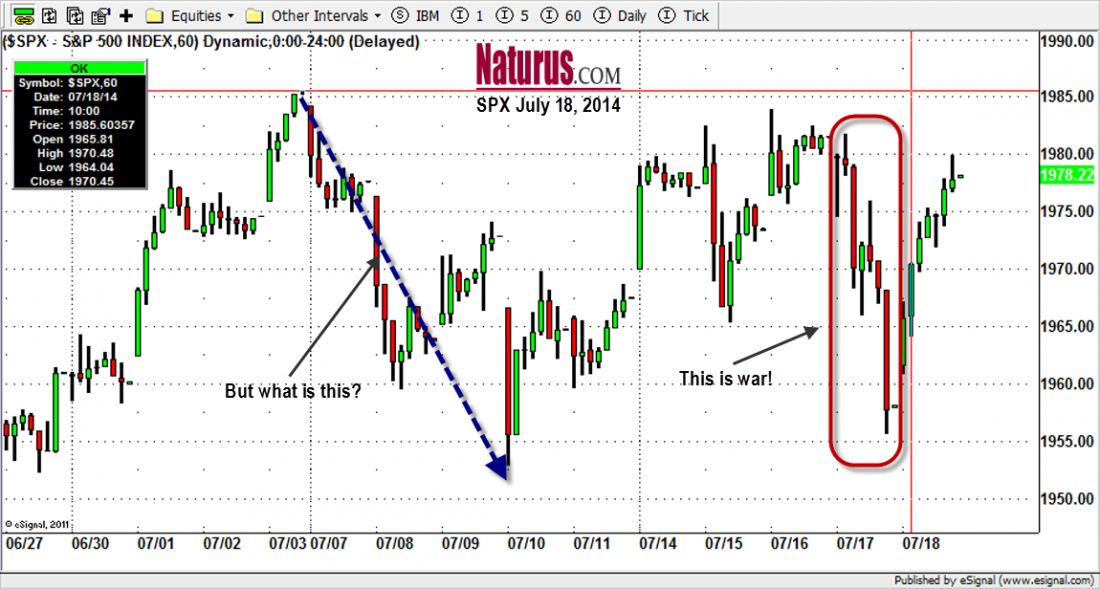Right now the media are flooded with the civil war in the Ukraine, a little less occupied with the Israeli offensive in Gaza, and have pretty much lost interest in the other two hot wars in the Middle East, Syria and Iraq (again).
But the market is a different story. The market has lost interest in all of them. The other half of the globe may be burning, but the S&P 500 (SPX) shrugs it off and reaches for the sky. How come?
The brief answer is that in the short term markets rise or fall as the public perception of risk increases or decreases. And we are fickle creatures, so our awareness of risk drops off pretty quickly.
Day One of the dramatic event rocks the market. By Day Three, we’re pretty much over it. And by Day 10, it is largely ignored, unless there is a steady stream of dramatic new headlines. Bad news that is largely the same as the previous bad news just doesn’t seem to matter.
That’s what has happened in the SPX over the past two weeks (see chart) and what happened to gold last week. The bad news doesn’t go away; but our awareness of it does.
The price action in the SPX illustrates the point. The war news July 17 sent the market down almost 30 points in a day … and right back up the day after. But there was an even greater decline two weeks earlier and a larger recovery. Why?
There’s no question the flow of news moves the market. But not for very long – unless there is a continuing, steady stream of events that reinforces our perception of risk and changes our basic understanding of market conditions.

SPX – 60 minute bars




